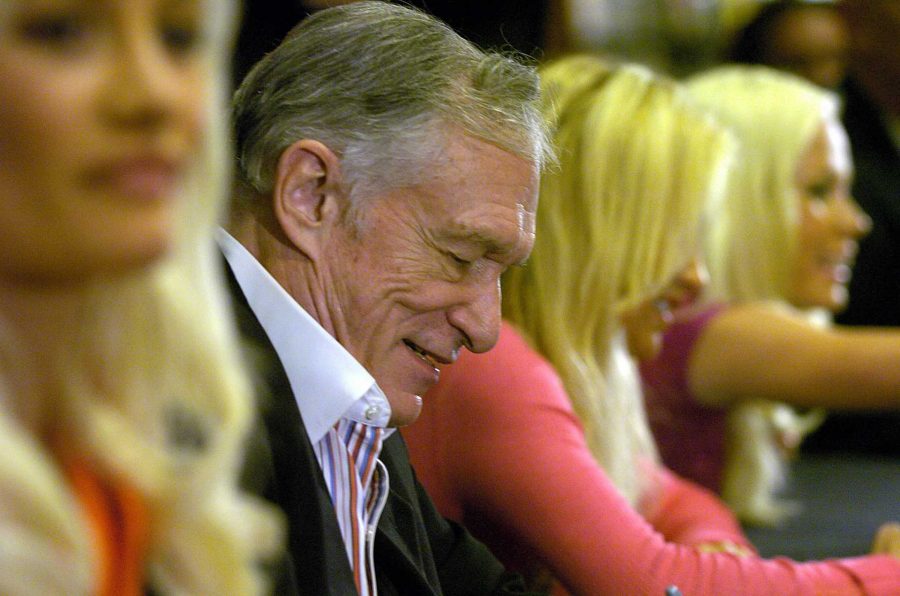By Ella Lee
[email protected]
On April 9, 1926, Hugh Hefner was born into a conservative Midwestern family in Chicago; 27 years later, he went on to create one of the world’s most familiar and enduring brands, leading one of the largest social revolutions in modern history. The revolution that Hefner led encouraged sexism by promoting the objectification of women and masking it behind the notion of a new, forward-thinking way of life.
Many attribute the first Playboy’s great success to its iconic cover featuring Marilyn Monroe, but fewer know that Hefner published her pictures without her consent. As an undiscovered actor, Monroe attempted to earn extra cash by selling her nude images to photographer Tom Kelley. She signed the release of the images under the alias Mona Monroe, later saying she had been “nervous, embarrassed, even ashamed of what [she] had done, and [she] did not want [her] name to appear on that model release.”
After Monroe’s career took off, Hefner paid the company in possession of her pictures $500 for two images of Marilyn: one clothed and one nude. Using these pictures, Hefner launched his first Playboy with Monroe’s image plastered on the cover, the headline declaring “First time in any magazine, FULL COLOR, the famous MARILYN MONROE NUDE.” The magazine was a great success — at Monroe’s expense. She later said, “I never even received a thank-you from all those who made millions off a nude Marilyn Monroe photograph. I even had to buy a copy of the magazine to see myself in it.” Although Hefner’s sexual revolution had begun, he used women to climb the ladder of success, and he undermined feminism for years to come.
“[Hefner] had a very negative impact on feminism,” first-year UI student Becca Swanson said. “He set an example of how to disrespect women and get away with it.”
Masking the truth in saying he was liberating women from their stereotypes, Hefner encouraged the objectification of women, from their treatment at the Playboy mansion to the costumes he had his Bunnies wear.
In her exposé A Bunny’s Tale, journalist Gloria Steinem described the following scene in a Playboy club. “A guard greets her by calling out, ‘Here bunny, bunny, bunny.’ The club wardrobe mistress stuffs a plastic dry cleaning bag down the front of her Bunny costume to increase her cleavage.” By enforcing such a degrading environment, Hefner displayed women as sexual objects rather than people.
Ex-Playmate Holly Madison wrote of similar circumstances in her memoir Down the Rabbit Hole. “[He made me feel] beyond ugly … I was just the homely girl who was ‘lucky’ enough for Hef to allow into the mansion,” she wrote in response to Hefner telling her she “looked old, hard, and cheap.” The language he used to describe Madison and the way that he treated his other “girlfriends” is blatant sexism. However, Hefner somehow is a champion of women’s liberation.
“To his supporters, [Hefner] is the great sexual liberator who helped free Americans from Puritanism and neurosis,” New York Times commentator Brooks Barnes wrote in 2009. “To his detractors, he helped set in motion a revolution in sexual attitudes that have objectified and victimized countless women and promoted an immoral, whatever-feels-good approach to life.”
This is not to say that Hefner was all bad; in fact, his striving for social change led to significant successes on the matters. He was a huge proponent of same-sex marriage rights, saying it was a “a fight for all our rights.” Despite the good work he did throughout his life, however, the way he treated women while he was alive furthered the sexism that he printed on the pages of Playboy.



